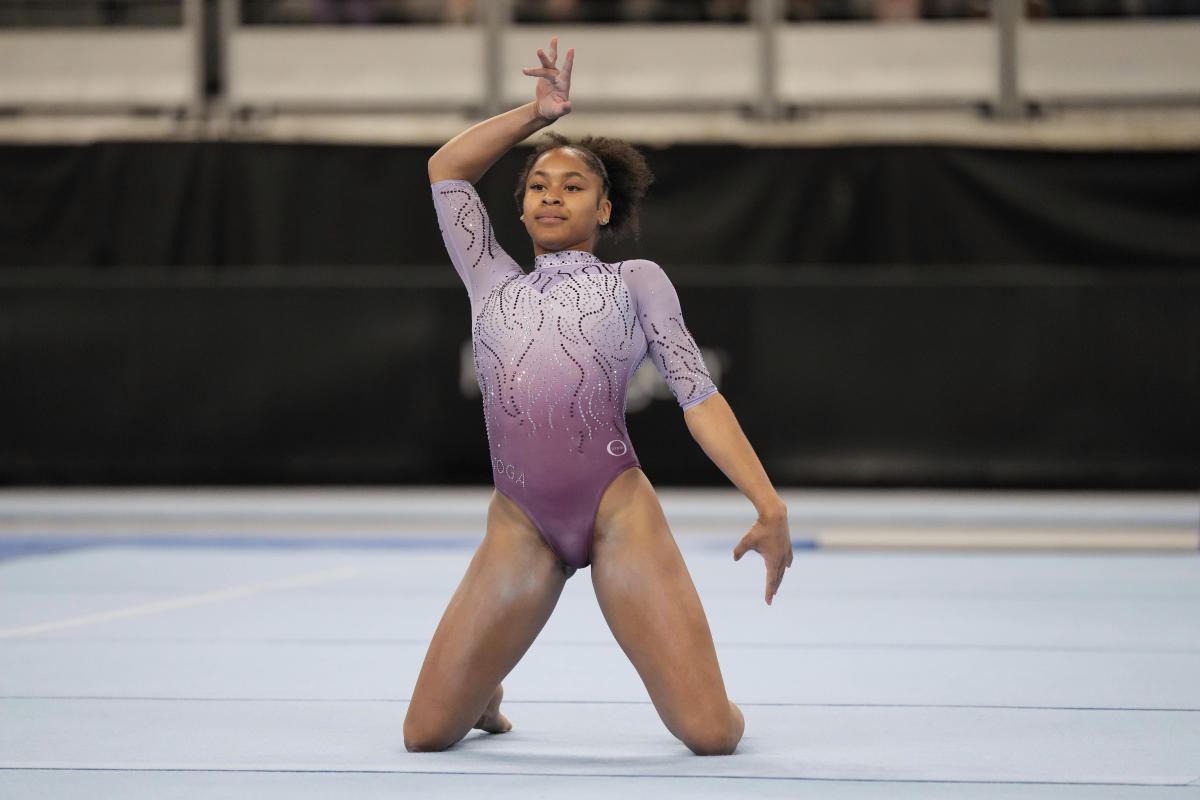Injury Prevention and Management
Gymnastics olympic trials injury – Gymnastics is a physically demanding sport that requires strength, flexibility, and coordination. However, it also carries a high risk of injury. Common injuries in gymnastics include sprains, strains, fractures, and dislocations. These injuries can be caused by a variety of factors, including improper technique, inadequate conditioning, and insufficient nutrition.
The recent gymnastics Olympic trials were marred by a string of injuries, including one to standout gymnast Suni Lee. At suni lee height , she is one of the shortest gymnasts on the US team, but her diminutive stature belies her incredible strength and athleticism.
Despite her injury, Lee remains determined to compete in the upcoming Olympics, where she hopes to add to her already impressive medal count.
Preventing and managing injuries in gymnastics is essential for athletes to stay healthy and competitive. There are a number of evidence-based strategies that can be implemented to reduce the risk of injury, including:
Proper Technique
- Using proper technique when performing gymnastics skills can help to reduce the risk of injury. This includes using the correct body position, maintaining good alignment, and landing correctly.
- Coaches should provide clear instructions and demonstrations of proper technique, and they should supervise athletes closely to ensure that they are performing skills correctly.
Conditioning
- Proper conditioning can help to strengthen the muscles and joints that are used in gymnastics. This can help to reduce the risk of sprains, strains, and other injuries.
- Conditioning should include exercises that improve strength, flexibility, and balance. It is also important to gradually increase the intensity and duration of conditioning exercises over time.
Nutrition
- Eating a healthy diet is essential for overall health and well-being, and it can also help to reduce the risk of injury. A healthy diet for gymnasts should include plenty of fruits, vegetables, whole grains, and lean protein.
- It is also important to stay hydrated by drinking plenty of fluids, especially water.
Warm-up and Cool-down
- Warming up before gymnastics activities helps to prepare the body for exercise. This can help to reduce the risk of injuries such as muscle strains.
- Cooling down after gymnastics activities helps to reduce muscle soreness and stiffness. This can help to prevent injuries such as sprains.
Impact on Olympic Trials: Gymnastics Olympic Trials Injury

Injuries can have a significant impact on a gymnast’s performance at the Olympic Trials. They can prevent a gymnast from training or competing at their full potential, and can also lead to mental and emotional challenges.
In some cases, injuries can even prevent a gymnast from qualifying for the Olympics altogether. For example, in 2016, gymnast Gabby Douglas was forced to withdraw from the Olympic Trials due to a back injury.
Case Studies
However, there are also many cases of gymnasts who have overcome injuries to qualify for the Olympics. For example, gymnast Simone Biles has overcome several injuries, including a broken ankle and a torn ACL, to become one of the most successful gymnasts in history.
Another example is gymnast Laurie Hernandez, who overcame a stress fracture in her foot to win a gold medal at the 2016 Olympics.
Mental and Emotional Challenges
Injuries can also take a toll on a gymnast’s mental and emotional health. Gymnasts who are injured may feel frustrated, anxious, or depressed. They may also worry about their future in the sport.
It is important for injured gymnasts to have a strong support system in place. This can include coaches, teammates, family, and friends. A strong support system can help injured gymnasts stay motivated and positive during their recovery.
Role of Medical Professionals
Sports medicine professionals, including physicians, physical therapists, and athletic trainers, play a vital role in assessing and treating gymnastics injuries.
They use their expertise to diagnose injuries, develop treatment plans, and provide rehabilitation guidance. Advanced imaging techniques, such as MRI and CT scans, are often used to diagnose injuries and assess their severity.
Collaboration between Gymnasts, Coaches, and Medical Professionals, Gymnastics olympic trials injury
Collaboration between gymnasts, coaches, and medical professionals is essential for effective injury management. Gymnasts can provide valuable information about their symptoms and the circumstances surrounding their injuries. Coaches can offer insights into the gymnast’s training regimen and technique, which can help medical professionals identify potential risk factors.
By working together, these professionals can develop a comprehensive treatment plan that addresses the gymnast’s individual needs and goals.
The gymnastics olympic trials injury was a devastating blow to the athlete’s hopes of competing in the us olympic trials. The injury occurred during a training session, and it left the athlete with a broken bone and torn ligaments.
The athlete is now undergoing surgery and rehabilitation, and it is unclear if they will be able to recover in time for the trials.
